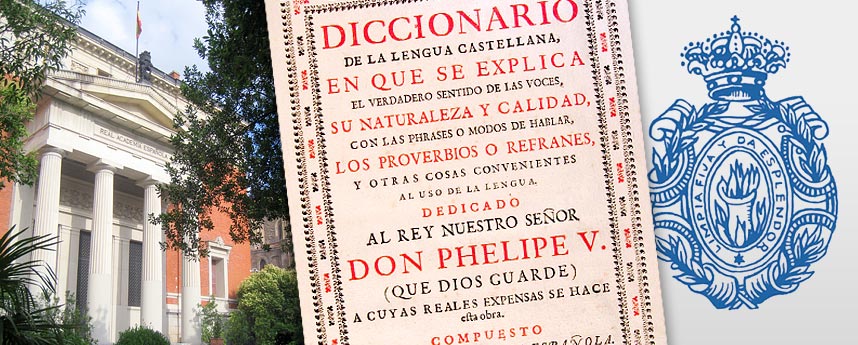Home Page » Post
« Next Article: A Christmas Course from don Quijote
» Previous Article: How to write a CV in Spanish
Real Academia Espanola
by Matthew Wisdom -
Thursday, July 3, 2014

The Royal Spanish Academy
La Real Academia Española, RAE, known in English as the Royal Spanish Academy, is the official institution that is charge of the regulation of the Spanish Language.
- It is a royal establishment that is located in the capital of Spain, Madrid.
- It is connected to a multitude of different national language academies across 21 different Spanish-speaking (hispanophone) states via the Associate of Spanish Language Academies.
- The Academy’s motto when translated into English means it “It cleans, sets and casts splendor” or “Limpia, fija y da splendor” when written in its original Hispanic context. The symbol that accompanies these words is a fiery crucible.
The Royal Spanish Academy was created in 1713, drawing inspiration from similar institutions that already existed in Italy and France, namely the Academia della Crusca and the Académie française respectively. The motives behind the academy’s foundation were to “fix the voices and vocabularies of the Castilian language with purity, elegance and propriety”. The academy was put under the protection of the Crown in 1714 when King Philip V gave the constitution his blessing.
The Duke of Escalona who was also the Marquis of Villena was an aristocrat who was responsible for the foundation of the Academy. His name was Juan Manuel Fernández Pacheco and he outlined the purpose of the institution as serving to make sure that speakers of the Spanish language would always be capable of reading the literature of Miguel de Cervantes. To ensure this goal, an up-to-date and progressive preservation of the formal language would take place.
The Academy started to construct the guidelines for the conventional spelling system of the Spanish language in 1741 when the first edition of “Ortographía” (Orthography) was released, the name of the publication was changed to “Ortografia” from the second edition onwards. The propositions of the Royal Academy became the formal standard in Spain in 1844 after royal decree, and these proposals were then progressively accepted by countries in Latin America that were Spanish speaking.
The RAE is a hugely significant publisher of grammas and dictionaries and operates a fixed system for granting admission to words for its publications. A variety of resources, all of which are in Spanish, are available on its website, including an online dictionary. Undoubtedly its most well-known publication is the Dictionary of the Spanish Language of the RAE.
Members of the RAE are referred to as “Academic Numeracy” (which is translated from the Spanish Académicos de número.) This membership is made up of distinguished figures from the words of science and art and includes a number of Spanish authors. Members are chosen into their position for life by other academicians. Every academician has their own seat which is marked with a different character from the Spanish alphabet.
Keywords: real academia española,real academia espanola,spanish language,spanish spelling,hispanophone,castilian language,royal spanish academy
